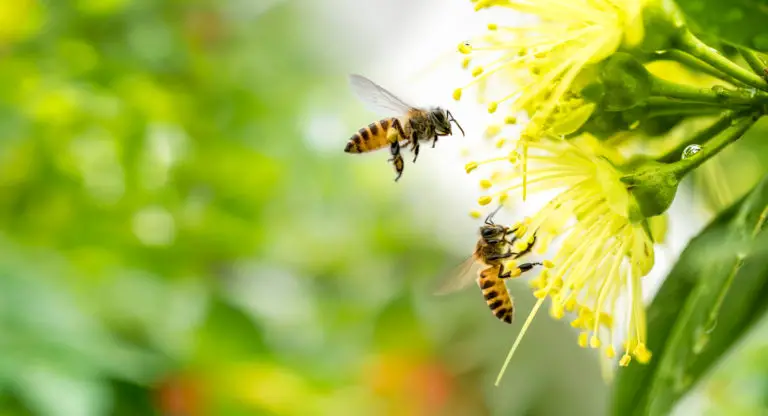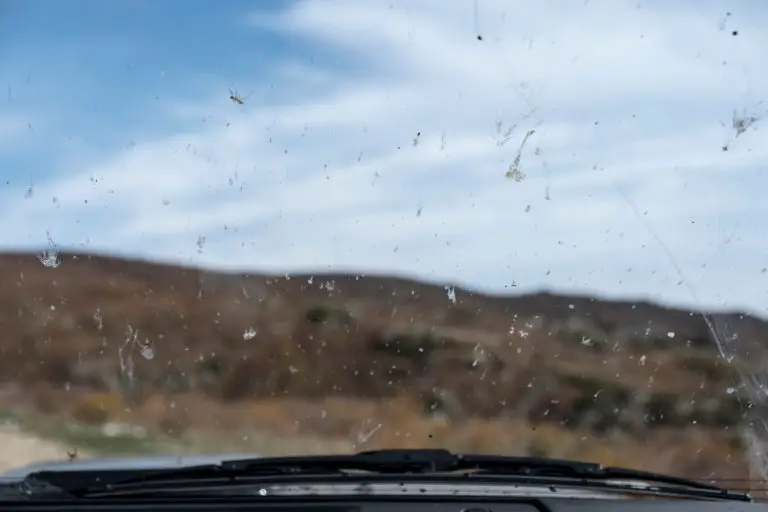Insects are often regarded as the unsung heroes of our planet’s ecosystems. These small, seemingly inconspicuous creatures play an outsized and indispensable role in maintaining the delicate balance of nature. From pollinating our crops to breaking down organic matter, insects are the unsung heroes of the natural world. Their significance extends beyond their sheer numbers and diversity; they are the glue that holds ecosystems together.

However, the alarming decline of bug splatters on car windows serves as an undeniable indicator of the insect apocalypse. In the not-so-distant past, long road trips or daily commutes would inevitably result in windshields covered in the remains of insects. This phenomenon was not merely an annoyance for drivers; it was a tangible representation of the abundance of insects in our environment.
The Decline of Bug Splatters on Car Windows: A Sign of the Insect Apocalypse?
Recall those times when embarking on a lengthy summer drive would leave your car’s windshield resembling the aftermath of a substantial insect collision? If you’ve observed that such a spectacle is now a rare occurrence, you’re not alone. Ecologists have likewise identified a reduction in the instances of insect residue on car windows, and some experts view this as a potential indicator of the more extensive “insect apocalypse” that is impacting our planet.

A survey conducted by Kent Wildlife Trust in the UK found that there were 50 percent fewer insects splattered on car windscreens compared to 15 years ago. The survey, which took place between June and August 2019, analyzed over 650 car journeys around the southeastern UK county of Kent. The drivers were asked to report the number of insects splattered on their car’s registration plate.
In contrast to a comparable survey conducted by the Royal Society for the Protection of Birds (RSPB) in 2004, the study revealed a decrease of about 50 percent in the number of insect splatters. The average count decreased from 0.2 splats per mile to 0.1 splats per mile.
Is it possible that the reduction in insect splatters can be linked to the increased aerodynamic design of modern cars, making them less susceptible to direct encounters with insects during travel? To investigate this hypothesis, the research team actively enlisted the participation of classic car owners in the survey. Nevertheless, even after factoring in this variable, a notable decrease in the insect population remained evident.
Your Clean Windshield is a Sign of Insect Armageddon: Unveiling the Alarming Decline of Insect Populations
The reduction in bug splatters is a poignant illustration of the broader crisis facing insects and the ecosystems they support. It’s a visceral reminder that the Insect Apocalypse is not a remote or abstract concern but a tangible and immediate threat to the natural world and, consequently, to our own well-being. Addressing the decline of insects requires urgent and concerted efforts to mitigate the factors responsible for their dwindling numbers, including habitat loss, pesticide use, and climate change. The fate of insects is intricately entwined with the health of our planet, and it’s high time we recognize the magnitude of their importance and take action to ensure their survival.
Addressing the decline of insects is not just an environmental issue; it’s a matter of our own well-being. The factors responsible for this decline, such as habitat loss, pesticide use, and climate change, are all linked to human activities. As such, we have a responsibility to take action.
Conservation efforts must focus on preserving and restoring insect habitats, reducing pesticide use through sustainable farming practices, and mitigating climate change through emissions reduction. Furthermore, public awareness and education are crucial in fostering a greater appreciation for insects and their essential roles in our ecosystems.
The fate of insects is intricately entwined with the health of our planet, and the time to act is now. The cleaner windshield is a stark reminder that the Insect Apocalypse is a real and immediate threat, one that we must confront with urgency and determination. Our actions today will determine whether insects continue to thrive and support the natural world or face further decline, with potentially catastrophic consequences for all of us.
It is important to note that this phenomenon has been talked about anecdotally since the early 2000s. Over the past 20 years, an increasing amount of scientific research has supported these observations. In a 2019 study, Danish researchers used the windshield method and noted reductions of 80 to 97 percent in insect splatters. Another study from 2018, conducted around the El Yunque National Forest of Puerto Rico, found that insect biomass had fallen by 10 to 60 times since the 1970s.
All of this points to a wider problem facing insects across the world. Some ecologists are warning that we are on the brink of an “insectageddon,” a catastrophic collapse of insect life that could result in the extinction of 40 percent of the world’s insect species within the next few decades. While there are several factors contributing to this decline, including climate change, pesticide use, habitat destruction, and disease, the decline of bug splatters on car windows serves as a visible symbol of this alarming trend.
Nevertheless, a number of scientists advise exercising caution when attempting to draw sweeping conclusions based solely on the “windscreen phenomenon.” They contend that substantial, rigorous data is essential to support the assertion of a comprehensive “insectageddon.” While it might suggest a shift in insect habitats, moving them farther from human development, it may not necessarily signify a worldwide decline in the insect population. The phenomenon could potentially be attributed to the enhanced aerodynamics of vehicles.
Where Have All Our Insects Gone? Plunging Insect Numbers Spark Concerns
More than a third of the global food crops rely on animal pollinators for their reproductive processes. In essence, one in every three mouthfuls of fruits and vegetables that find their way onto our plates owes their existence to the crucial role played by animal pollinators, including butterflies, moths, beetles, bees, and numerous other insects.
If these vital pollinators disappear, we could face significant challenges in food production and ecosystem stability. Therefore, it is crucial that we address the factors contributing to the decline of insects and take steps to protect their habitats and populations.
The decline in bug splatters on car windows is not just a minor inconvenience for drivers—it serves as a visible indicator of the larger insect apocalypse we are potentially facing. While scientists continue to debate the extent and causes of this decline, one thing is clear—we must take action to prevent the loss of these essential creatures and ensure the future of our planet’s ecosystems.
Insectageddon: The Worrisome Reality of Insect Decline
In recent years, scientists and environmentalists have raised alarm bells about the dramatic decline in insect populations across the globe. From bees and butterflies to beetles and flies, these tiny creatures play an essential role in the intricate tapestry of life on Earth. While the exact reasons behind this phenomenon are still subject to ongoing research, the implications are far-reaching and deeply concerning.
Insectageddon is not confined to a specific region or ecosystem; it is a global issue that transcends geographical boundaries. The causes of this decline are multifaceted and interconnected, encompassing habitat loss, pesticide use, climate change, pollution, and invasive species. These factors act in synergy, exacerbating the threats faced by insects and making it challenging to pinpoint a single culprit. Nevertheless, regardless of the specific causes, the fact remains that insect populations are dwindling at an alarming rate, and the consequences for our planet’s ecosystems are potentially dire.

This Site Was Inspired By An Interest in Protecting the Environment:
We had the privilege and joy of learning from Dr. Charlie Stine who instilled a love for the natural world through incredible field trips with the Johns Hopkins Odyssey Certificate program in Environmental Studies. At the time, the program was endorsed by the Maryland Department of Natural Resources. Sadly, after Dr. Stine retired, the program was phased out. We hope that we honor his legacy by shining a bright light on environmental issues and sharing good news about the success of various conservation programs when possible.

